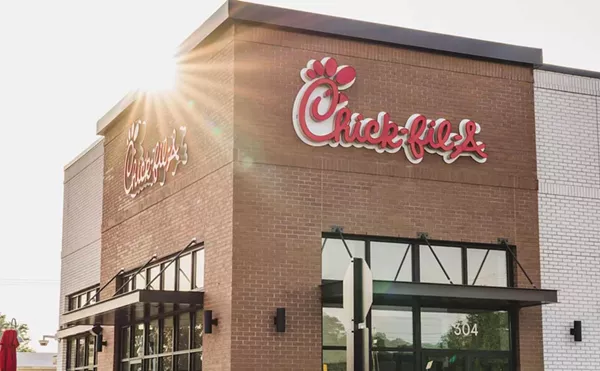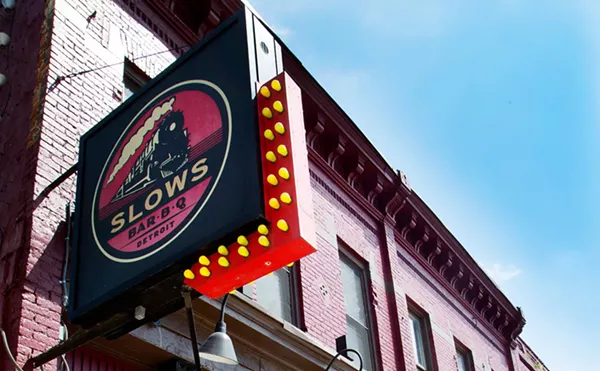
Audio By Carbonatix
[
{
"name": "GPT - Leaderboard - Inline - Content",
"component": "35519556",
"insertPoint": "5th",
"startingPoint": "3",
"requiredCountToDisplay": "3",
"maxInsertions": 100,
"adList": [
{
"adPreset": "LeaderboardInline"
}
]
}
]
Shahi was recommended by a Metro Times reader who regularly makes the trip from Farmington Hills, where he is surrounded by Indian restaurants, to Rochester Hills, where he visits the only Pakistani restaurant in the area.
“It is hard for me to really explain what the difference is between Indian and Pakistani food,” wrote Samira Lazreq. “But there is a subtle difference. I am sure the manager can explain it to you better than I.”
I was a little doubtful I’d get such an explanation, as Lazreq also described Shahi as “like the Soup Nazi place.”
My party found manager and chef Mohammed Irfan Malik much friendlier than Jerry Seinfeld’s nemesis, but not overflowing with info either. The restaurant window advertises “Indian and Pakistani food.”
Asked, on our first visit, “Which dishes are Pakistani?” Malik replied that they all were, clearly not wanting to delve any further into the subject. When we asked for one more piece of Styrofoam for take-home, he didn’t bother to suppress a sigh.
But these flaws were quite minor, really. The food is very good, if the wait’s a bit long, and prices are exceptionally low.
Most Indian restaurants in America serve dishes from northern India, so if you look at your map, it’s not surprising that many of the items on Shahi’s menu are familiar — tandoori chicken, palak paneer, aloo gobhi, an excellent dal.
My Internet search told me that Pakistani cuisine has Afghan-Turkish-Iranian roots, a legacy of Muslim rule on the subcontinent, which was then “Indianized” by using more spices.
Here’s something you won’t find on an Indian menu: beef. Shahi (it means “royal”) serves several beef dishes, such as haleem, a golden-red-brown stew with barley and ginger.
Other unfamiliar dishes are machli masala — marinated salmon cooked with yogurt and spices — and chappli kebab, not your usual idea of kebabs at all. These kebabs are really fried patties — ground beef or chicken mixed with eggs and/or chickpeas — and served with spicy french fries.
We enjoyed most the aloo cutlass kebab, like a spicy latke with pomegranate seed and a hint of cilantro. Many of Shahi’s dishes use cilantro, but always in combination with other spices and thus more delicate than cilantro-flavored dishes usually are.
One appetizer I didn’t know was aloo cholay: A cold mixture of chickpeas, potatoes, onions, tomatoes, chutney and “crispy flakes” (not Wheaties but toasted or fried flat bread). This was even better heated up (by accident) the next day.
The onion/spinach pakoras are not as crunchy as you might expect, but are quite tasty.
Shahi palak and shahi qorma are said to be lamb and mutton, respectively, but they seemed to come from the same tender animal.
The palak (spinach) looks like a beautiful dark-green pesto and incorporates slivers of ginger. Palak paneer is similar but with cubes of nutty house-made cheese.
Even the predictable chicken tikka was more interesting than most, with well-spiced (actual) kebabs, broiled with green pepper and onion.
Rice pudding and gulaab jaman are fine, the gulaab achingly sweet, but for a different dessert try gajer hahva, carrots cooked with milk, sugar, eggs and nuts.
The only bread is naan. The plainest variety comes with sesame seeds; try the garlic version. Order rice separately, but one serving is enough for three.
Shahi has shorter hours through Dec. 27, in observance of Ramadan: 3-8 p.m. Usual winter hours 11:30 a.m.-8:30 p.m.
Jane Slaughter is a Detroit-based freelance writer. Send comments to letters@metrotimes.com





